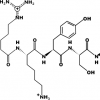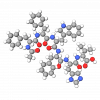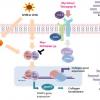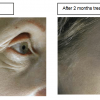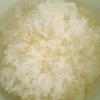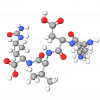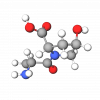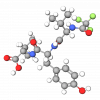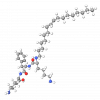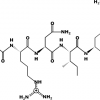Decapeptide-10 is a synthetic peptide that boosts the generation of new dermal cells lessening the appearance of fine lines and wrinkles, preventing their formation, and strengthening hair follicles. This peptide is also known under the trade name CG-Keramin2.
Peptides
There are numerous examples in physiology of peptide regulatory elements that play integral roles in basic homeostatic mechanisms such as injury-repair responses and other stimulus-response actions. Among these are well-known neuropeptides (e.g., bradykinins, endorphins); metabolism and fat storage regulators (e.g., neuropeptide Y, leptin, insulin); tanning and skin pigmentation-related peptides (e.g., α-MSH, ACTH, Agouti), and peptides involved in wound healing (e.g., FGF).
This large group of innovative cosmeceutical ingredients triumphed in the world of skincare products during the last two decades. Peptides are chains of amino acids that are attached in a specific order. Amino acids are naturally occurring in the body and are vital to everyday living processes. Peptides can be made up of 2 or more amino acids that can stimulate different responses within the body. As a result, peptides serve as tiny messengers that can be sent to kick the skin into gear and make it look better.
Peptides are leading a beauty revolution due to their excellent multi-functional properties; formularies are scrambling to access the latest advances in cosmetic peptide technology. In addition, their "Botox-like" performance, activation of collagen and elastin production, and skin-lightening effect make them very efficient against coarse wrinkles and hyperpigmentation of the skin.
Decapeptide-12 is a synthetic peptide (with sequence Tyr-Arg-Ser-Arg-Lys-Tyr-Ser-Ser-Trp-Tyr) known under the trade name Lumixyl™ that acts as a tyrosinase inhibitor, the enzyme responsible for the production of melanin in the skin.
Decapeptide-18 is a synthetic peptide known under the trade name CG-WINT that stimulates the formation of a new hair follicle.
Decapeptide-19 is a synthetic peptide with the sequence Ala-Cys-Asp-Gly-Arg-Thr-Gln-Ala-Leu-Cys that inhibits the specific biological activity of TNF-α cytokine and exhibits anti-inflammatory and hair growth-promoting properties. It is known under the trade name CG-Elima.
Decapeptide-20 is a synthetic peptide known under the trade name CG-Promkine that interacts with receptors for the melanocyte-stimulating hormone preventing the loss of pigment by hair keratinocytes.
Decapeptide-4 is a synthetic peptide known under the trade name CG-IDP2 that mimics the Somatomedin growth factor involved in normal skin growth, healing, and wound repair. Applied topical, it boosts collagen and elastin production improving skin elasticity and firmness.
Delisens™ is a peptide-based complex ingredient widely used in personal care products with soothing, anti-inflammatory, anti-allergic, and hydrating effects.
It is well known that skin pigmentation is mainly affected by three major signaling pathways; α-MSH/MC-1R, ET-1/ETBR, and SCF/c-kit.
Collagen represents the main component of the extracellular matrix of the dermal connective tissue and its concentration decreases as we age. It is known that the loss of collagen is not only due to a reduction of the synthesis but also due to its enhanced degradation.
Detoxiquin is a peptide-based complex ingredient that unites Snow mushroom extract with an iron-containing synthetic peptide to protect DNA from reactive radicals, reduce lipid peroxidation, and decrease protein degeneration.
Skin aging is a progressive accumulation of damage, beginning at the molecular level within the dermal cells. Transition metals are one of the factors responsible for the formation of highly reactive and DNA-damaging species (free radicals).
Diamond Sirt is a conjugated complex formed by silicon dioxide microspheres covered with aggregated diamonds that stabilize function-sirtuin peptide (Acetyl sh-Pentapeptide-35) for use in anti-aging treatments.
Dipeptide-2 is a biologically active peptide with the sequence Val-Trp (VW) that can inhibit both Angiotensin Converting Enzymes
Dipeptide-8 (Alanyl-hydroxyproline; Ala-Hyp) is a synthetic peptide initially found in hydrolyzed collagen mixture.
ECM-Protect® is a peptide that inhibits the enzymatic activity of the elastase and the cutaneous MMP-1. ECM-Protect® defends the body’s collagen and elastin network against harmful damage caused by environmental factors (UV radiation, pollution, cigarette smoke) and aging.
Elaidoyl Tripeptide-37 is a synthetic lipo-peptide with sequence Elaidyl-KFK (Elaidyl-Lys-Phe-Lys-OH) known under the trade name Lipospondin. It is an ester of elaidic acid and Tripeptide-37 (KFK peptide), which repeats a part of the sequence of Thrombospondin.
As the skin is stressed during the aging process, the synthetic activity of cells decreases in general. The production of MFAP-4 is reduced and the whole process of elastin fiber formation is negatively involved from its first stage.
Hydrolysed soybean proteins are known for their anti-aging effect on the skin. Among the small peptides in soybean protein hydrolysates, a tripeptide combining the gamma-glutamic acid-cysteine sequence was selected that was effective in collagen proliferation.
Glutamoyl Cysteinoyl Beta-Alaninoyl Glutamoyl Tetrapeptide-58 is a synthetic peptide manufactured through the chemical synthesis of soybean peptides. It is known under the Catchitide-2 and is designed for antioxidant, whitening, and wrinkle improvement action.
Glutamoyl Dipeptide-55 Gamma Tetrapeptide-58 is a synthetic peptide using one of the small peptide sequences of proteins in soybeans. Manufacturer claims an antioxidant, skin whitening, and wrinkle improvement action. It is known under the trade name Catchitide-1.
Heptapeptide-28 is a synthetic peptide that promotes hair growth inducing follicle cell proliferation and differentiation. This peptide is also known under the trade name CG-Alostop.
Turmeric (Curcuma longa) is a spice used in oriental cuisine and medicine (traditional Chinese and Ayurveda) and as an ingredient in beauty preparations. It contains Turmerin protein with antioxidant and anti-inflammatory properties.
Heptapeptide-7 is a synthetic peptide with sequence Met-Gly-Arg-Asn-Ile-Arg-Asn, a fragment of a well-studied peptide HB-107 with wound-healing and anti-aging properties.
Heptapeptide-8 is a synthetic bioactive peptide that repeats a part of Laminin-5 and mimics its stimulating action. It boosts the production of Laminin-5 and Beta-1 integrin proteins improving DEJ (dermal-epidermal junction) and entire skin integrity.
